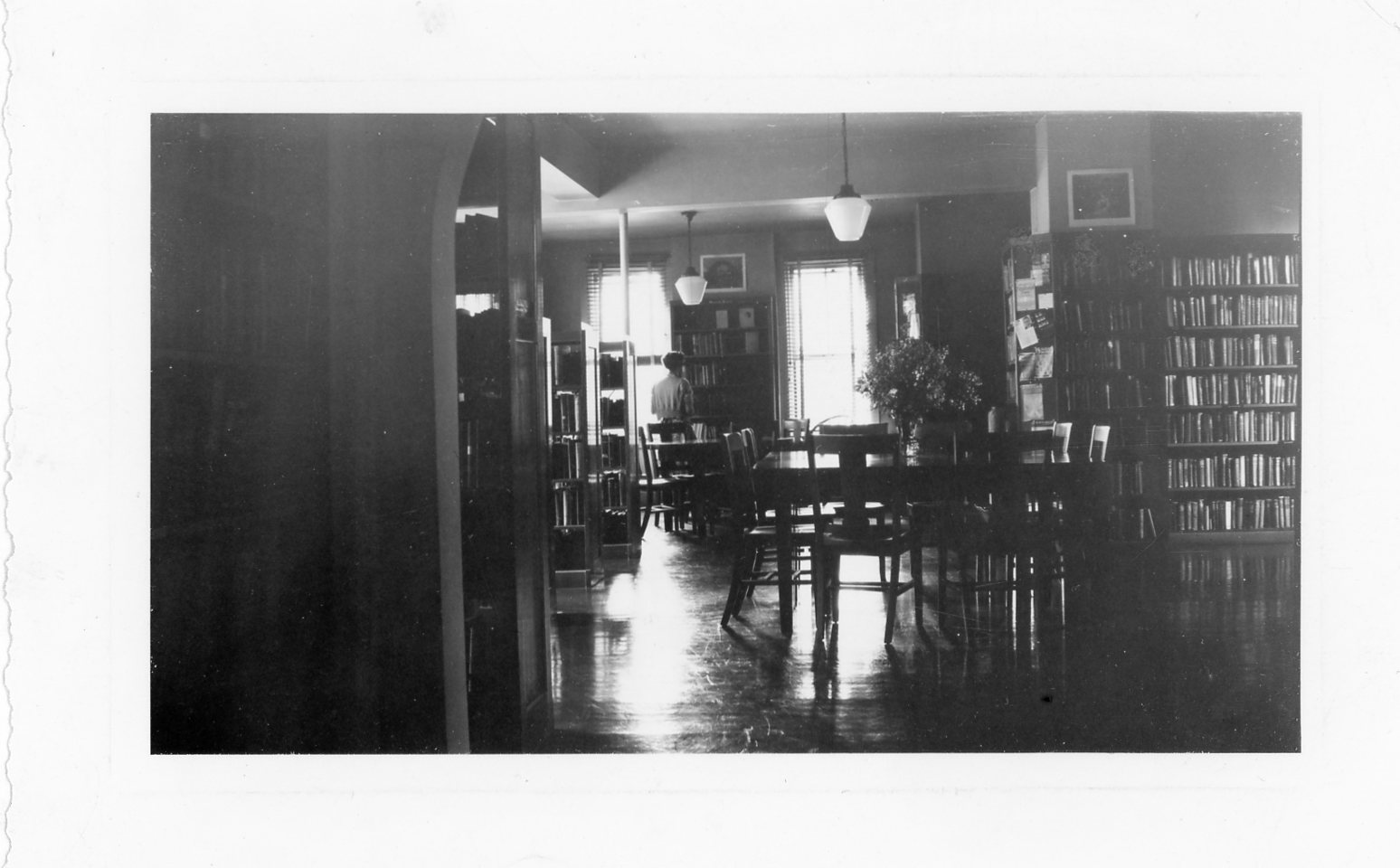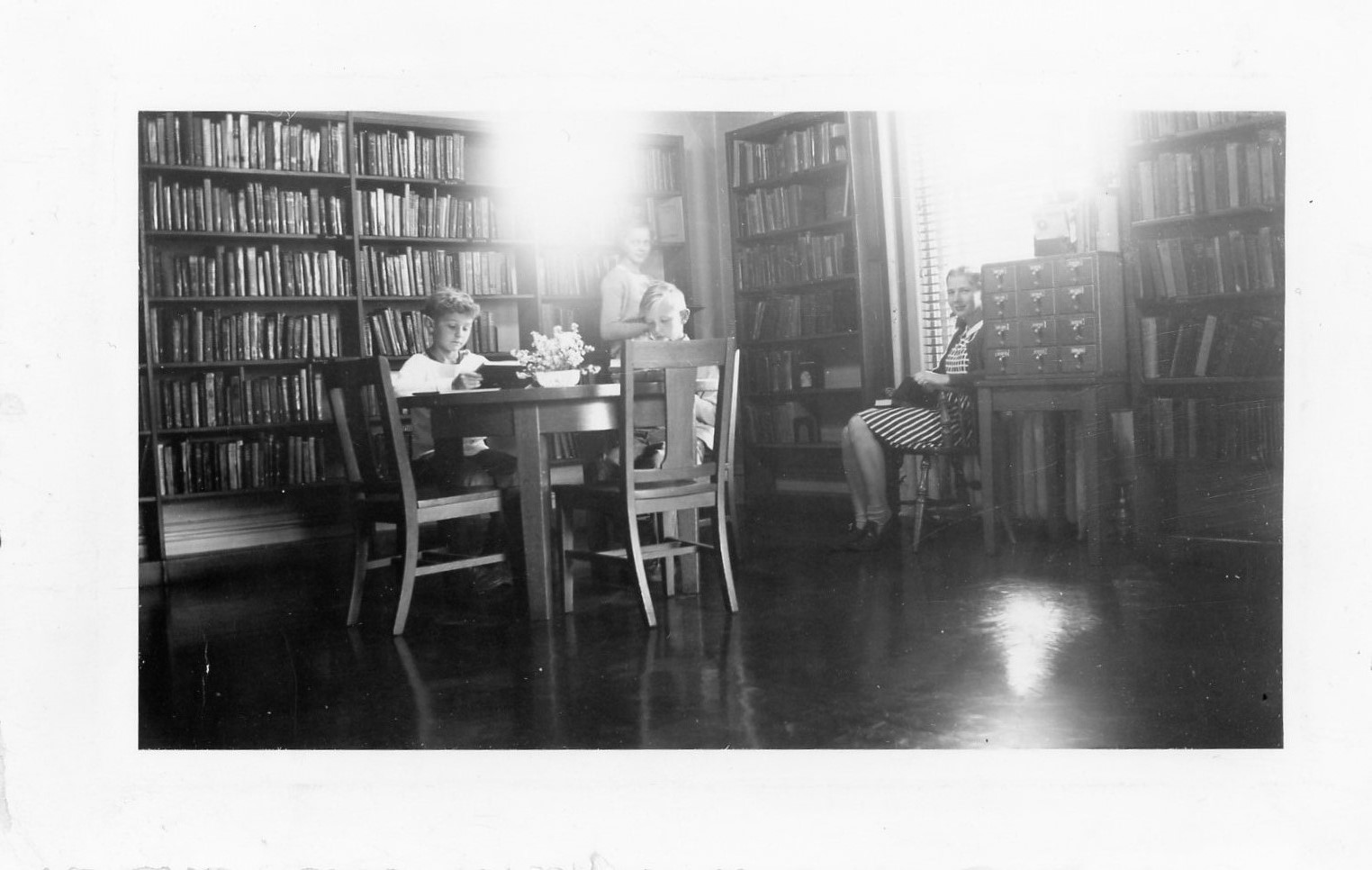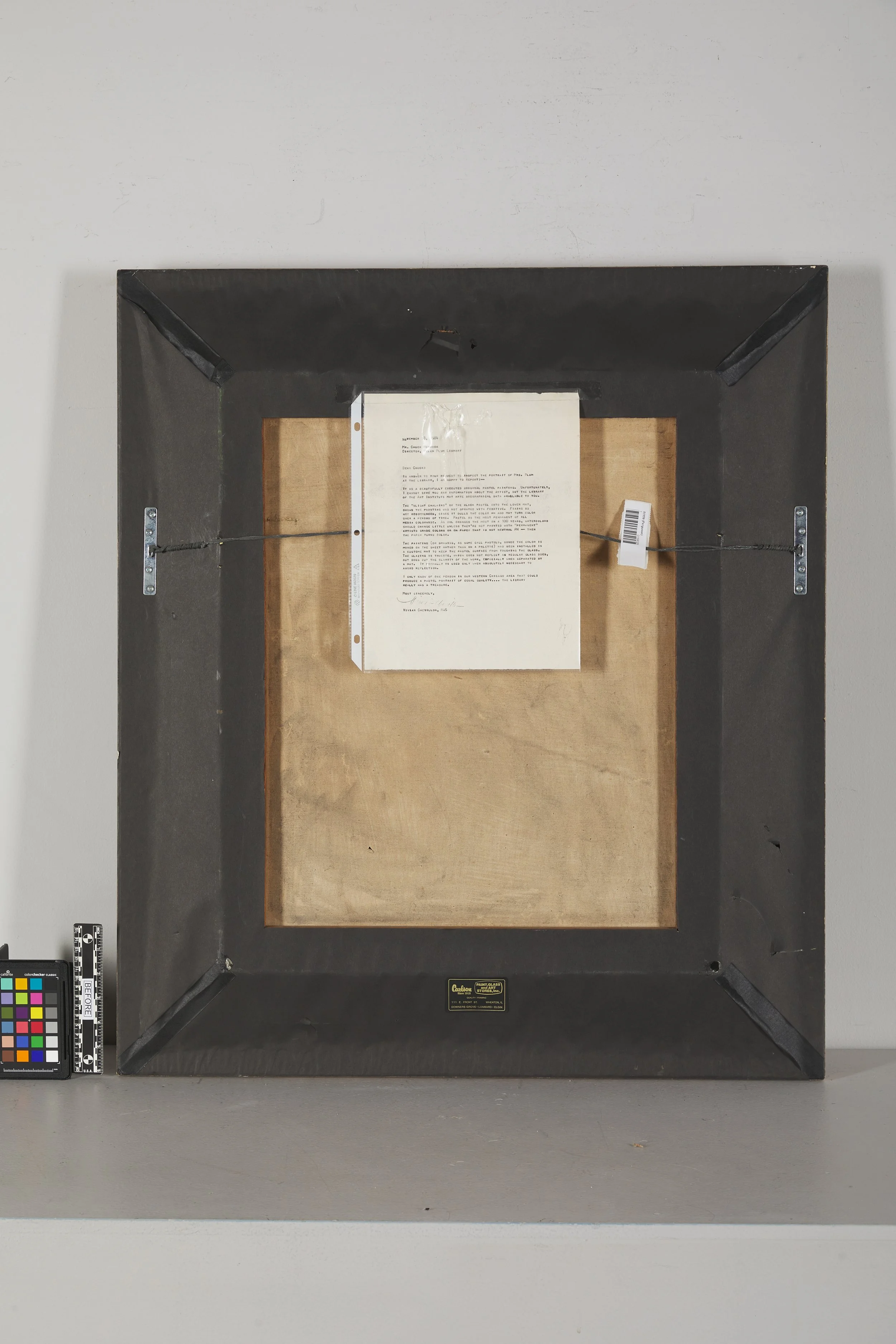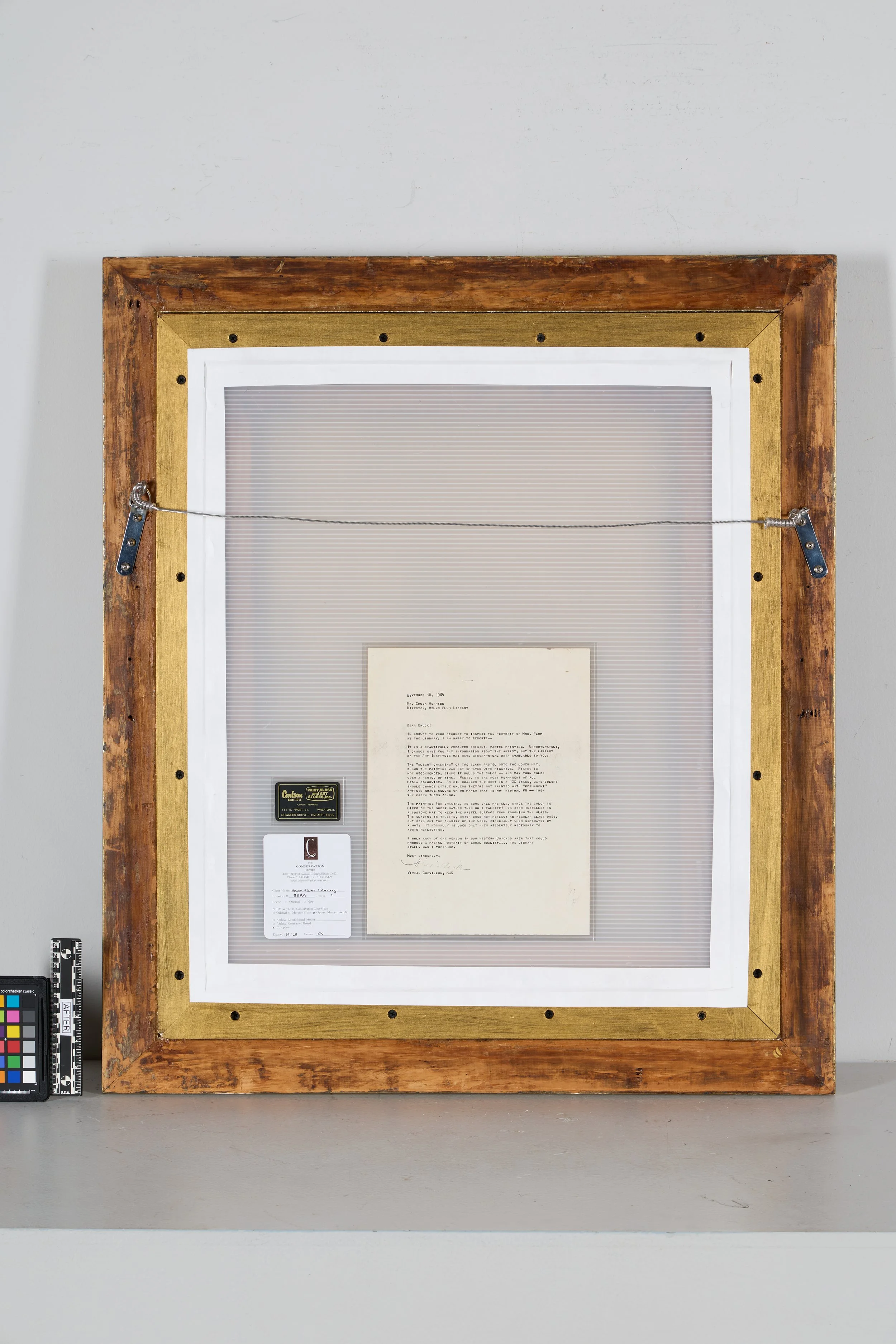As Helen Plum Library prepared to celebrate its second birthday in its brand-new facility, staff turned their attention to one particularly meaningful piece in their collection: a pastel portrait of Helen Plum, the philanthropist for whom the library is named. The Conservation Center was honored to carry out the treatment of this work, helping preserve a visual connection to the library’s origins and enduring community role.
The pastel before treatment.
Helen Plum was the wife of Colonel William R. Plum, a prominent figure in Lombard’s early history whose love of horticulture—especially lilacs—helped shape the town’s identity as the “Lilac Village.” Like her husband, Helen was deeply committed to civic life and education. Following William’s death in 1927, their estate was used to establish a public library in her name, ensuring the Plum legacy would continue to enrich the Lombard community for generations to come.
The library has evolved significantly since its founding in 1928, when it first opened its doors in Helen’s former home. As the community has grown and changed, so too has the library — expanding its collections, services, and outreach programs to reflect the diverse needs of Lombard’s residents. Most recently, the opening of a brand-new facility has marked a major milestone, designed with modern amenities, collaborative spaces, and a renewed commitment to honoring the library’s legacy.
The Plum house as a library.
(Courtesy of the Helen Plum Library)
The interior of the Plum house as a library.
(Courtesy of the Helen Plum Library)
The pastel drawing of Plum arrived at The Conservation Center framed, and our conservators examined the portrait in its frame to protect the original structure. The artwork had been mounted to a linen backing and stretched over a strainer. During their examination, conservators noted age-related discoloration, pastel pigment migration onto the mat, off-gassing on the glazing, and a layer of particulate matter across the surface. On the verso, areas of lifting media were observed, along with skinned linen.
The frame — composed of wood, composition material (compo), gesso, grey bole, and gold leaf — exhibited moderate abrasions, dents, and losses to both the gesso and compo layers, particularly at the miters and outer edges. It had also been entirely over-painted with bronze paint, obscuring its original surface. The matting was found to be acidic and in poor condition, while the glazing showed signs of particulate accumulation and lacked UV protection.
The pastel prior to treatment.
The verso prior to treatment.
Bozena Szymanski, our senior conservator of works on paper, began the treatment by mechanically removing the tape at the edges. Once the glazing was removed, the surface of the piece was selectively cleaned with a combination of soft brushes and textile sponges. The strainer was cleaned using lightly dampened cotton swabs. Areas of lifting media on the back of the linen were consolidated to stabilize the piece.
Watch our conservator treat the piece in the two videos below, then scroll down to learn more about the treatment:
Tape and glazing are removed, and then the surface of the piece is carefully treated.
Bozena uses dampened cotton swabs to clean the strainer.
For the frame, flaking elements such as compo, gesso, and gilding were carefully consolidated using suitable adhesives by Josh McCauley, our senior conservator of objects and frames. The bronze overpainting was removed carefully to reveal and restore the frame’s original finish. Losses in the cast decoration were recast, scratches and abrasions were inpainted, and gilding losses were ingilded, then toned to emulate the surrounding area.
The artwork was mounted on an archival 4-ply mat and engaged with an 8-ply rag antique mat designed to emulate the original. A secondary 4-ply mat was added to help capture any future pigment migration. The frame was built up internally to ensure a secure fit, and the piece was glazed with Optium Museum Acrylic — a conservation-grade acrylic that offers anti-reflective, anti-static, and UV-filtering protection. Finally, a Coroplast backing board was attached to the reverse, and any unstable hanging hardware was replaced.
After treatment.
The verso after treatment.
As Helen Plum Library turns the page with a state-of-the-art building, this conserved portrait of the founder represents a thoughtful nod to its origins and values. Just as the Plums nurtured the cultural and educational life of Lombard, the library continues to uphold that vision — investing not only in the future of its patrons, but in preserving the visual heritage that ties the past to the present.









